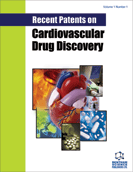Abstract
Multiple cell types in the vascular wall rely upon the rho-kinase (ROCK) signaling pathway for homeostatic function and response to injury. These cell types include endothelial and vascular smooth muscle cells, inflammatory cells, and fibroblasts. Rho is a guanosine triphosphate binding protein that activates its downstream target rho-kinase, in response to activation of a variety of G-protein coupled receptors. When activated, ROCK inhibits myosin phosphatase and conversely upregulates the ezrin-radixin-moesin family of kinases. In vitro activation of these signaling cascades results in modulation of multiple cellular processes, including enhanced vasoconstriction, proliferation, impaired endothelial response to vasodilators, chronic pulmonary remodeling, and upregulation of vasoactive cytokines via the NF-κB transcription pathway. ROCK activity has also been linked specifically to a number of known effectors of pulmonary arterial hypertension (PAH), including endothelin-1, serotonin, and endothelial nitric oxide synthase, among others. Recently, elevated ROCK activity has been demonstrated in various animal models of PAH with ROCK inhibitors associated with pulmonary vasodilatation and regression of PAH. ROCK inhibitors are a new class of agents which may be beneficial in the treatment of PAH. Fasudil (Daiichi Chemical and Pharmacological Company, Ibaragi, Japan), a first generation ROCK inhibitor, has been widely studied. Emerging evidence from both animal and human studies suggests that fasudil can promote vasodilation independent of the mechanism that induces vasoconstriction and will be useful in conditions in which endothelial function is impaired including PAH. Several recent patents have described fasudil as a potential therapeutic option in PAH. This article provides an overview of the role of ROCK in the pathogenesis of PAH and discusses the clinical efficacy of fasudil as a therapeutic option for treating PAH.
Keywords: Pulmonary arterial hypertension, rho-kinase, endothelium, fasudil, ROCK inhibitors DAMAGE, (ACE) inhibitors, pulmonary vascular cell growth, cardiac index, vasodilator effects, metalloproteinases
 19
19


